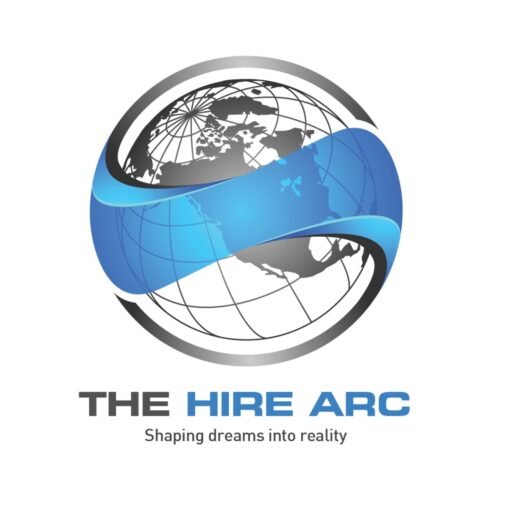When you think about building a strong team, two words always come up in HR conversations—recruitment vs selection. Many people use them interchangeably, but if you ask any HR professional, they’ll quickly tell you: recruitment and selection are not the same thing.
Recruitment is about attracting talent, while selection is about choosing the right person from that talent pool. Simple, right? But in reality, the difference between recruitment and selection runs much deeper. Understanding it can help businesses hire better, reduce turnover, and create stronger teams.
In this blog, we’ll explore:
- What recruitment and selection mean in HRM
- Key differences between recruitment and selection
- Their processes, functions, and importance
- Real-world examples and FAQs
- A clear conclusion of recruitment and selection that ties everything together
Let’s dive in.
What Is Recruitment in HRM?
If you’ve ever wondered, “What is the meaning of recruitment?”—here’s the answer.
Recruitment in HRM refers to the process of identifying, attracting, and encouraging potential candidates to apply for job openings in an organisation. It’s the first step in bringing new talent into the company.
Think of recruitment as marketing for jobs. Just like brands advertise products to attract buyers, companies “advertise” job opportunities to attract candidates.
Define Recruitment in HRM
Recruitment in Human Resource Management can be defined as:
“The systematic process of generating a pool of qualified candidates for a specific job role, to ensure that the best possible talent applies.”
Functions of Recruitment
- Create awareness about job openings.
- Encourage applications from potential employees.s
- Build an employer brand in the job market
- Ensure diversity by sourcing candidates from multiple channels.
Recruitment Process Meaning
The recruitment process usually includes:
- Identifying job requirements
- Writing job descriptions
- Posting jobs on portals or social media
- Using recruiters or staffing agencies
- Receiving and screening applications
So, recruitment is about filling the top of the hiring funnel with as many suitable candidates as possible.
What Is Selection in HRM?
Now that recruitment has brought in candidates, the next question is: What is selection in HRM?
Selection is the process of choosing the right candidate from the pool of applicants. If recruitment is about attracting, selection is about filtering and deciding.
Define Selection in HRM
Selection in Human Resource Management can be defined as:
“The process of evaluating candidates through tests, interviews, and assessments to determine the most suitable individual for the job.”
Selection Meaning and Process
The selection process generally includes:
- Application screening – Shortlisting based on resumes
- Written/online tests – Skill or aptitude evaluations
- Interviews – Technical, HR, and managerial rounds
- Background verification – Checking employment history, references, and criminal records
- Final decision – Offering the role to the best-fit candidate
While recruitment is positive (inviting people in), selection is more negative because it rejects unsuitable candidates.
Recruitment vs Selection: Key Differences
Here’s where the confusion clears up. Let’s compare recruitment vs. selection side by side.
| Aspect | Recruitment | Selection |
| Meaning | Process of attracting and encouraging candidates to apply | Process of choosing the best candidate from the pool |
| Nature | Positive – adds candidates to the funnel | Negative – eliminates unsuitable candidates |
| Objective | Generate a pool of talent | Choose the most suitable talent |
| Process | Advertisement, job postings, sourcing | Screening, testing, interviewing |
| Time | Starts the hiring cycle | Ends the hiring cycle |
| Outcome | Pool of applicants | Final candidate hired |
Simple Analogy
- Recruitment = Inviting people to a party
- Selection = Deciding who gets to stay till the end
Why Is the Difference Between Recruitment and Selection Important?
Many managers don’t see the difference—but HR professionals know that mixing them up can cost a company dearly.
Here’s why:
- Better hiring decisions – When you separate recruitment and selection, you improve the quality of hires.
- Saves costs – Proper selection avoids wrong hires, which are expensive.
- Boosts productivity – Employees chosen through structured selection tend to perform better.
- Supports compliance – Clear processes reduce bias and discrimination claims.
So, recruitment and selection in human resource management must work together, but not as one.
Steps in the Recruitment and Selection Process in HRM
If you’re still wondering, “What is recruitment and selection in HRM?”—let’s break it down step by step.
Recruitment Process Steps
- Identifying job vacancies
- Job analysis & description
- Advertising vacancies
- Collecting applications
- Building candidate pipelines
Selection Process Steps
- Screening resumes
- Conducting assessments
- Interviewing candidates
- Background verification services
- Final job offer
Together, they form the staffing cycle—from hiring to onboarding.
Recruitment vs. Hiring: Is There a Difference?
Yes, and it’s another area where people get confused.
- Recruitment: Finding potential candidates for a role
- Hiring: The actual act of offering the job and bringing the person on board
So, hiring is the outcome of recruitment + selection.
Recruitment vs. Staffing: Another Comparison
Staffing is broader than recruitment.
- Recruitment = Finding candidates
- Staffing = Managing the entire workforce (recruitment, training, payroll, compliance, etc.)
For example, The HireArc offers not just recruitment services but also payroll outsourcing, compliance, background verification, and HR shared services, which fall under staffing solutions.
Real-World Example of Recruitment and Selection
Imagine a company needs a software developer:
- Recruitment: The HR team posts jobs on LinkedIn, reaches out on Naukri, and gets 200 applications.
- Selection: They filter resumes, conduct coding tests, interview 20 candidates, and finally choose 1 developer.
That’s the difference between recruitment and selection in action.
Conclusion of Recruitment and Selection
To wrap it up:
- Recruitment = Attracting candidates
- Selection = Choosing the right ones
They are different but complementary. Recruitment fills the funnel, and selection ensures only the best move forward.
In today’s competitive world, businesses that understand the difference between recruitment and selection will build stronger teams, reduce hiring mistakes, and save costs. And if you want expert support, companies like The HireArc provide end-to-end solutions—from hiring services in Mumbai to payroll outsourcing, compliance, HR shared services, learning & development, and background verification services—so you can focus on growth while they handle your people strategy.
FAQs on Recruitment and Selection
1. What is meant by recruitment?
Recruitment is attracting potential candidates to apply for a job.
2. What do you mean by selection?
Selection is choosing the right candidate from applicants through evaluation methods.
3. What is the difference between recruitment and hiring?
Recruitment is about sourcing talent, while hiring is the act of giving the job to a candidate.
4. What are the steps in the selection process in HRM?
Resume screening, tests, interviews, background checks, and final offer.
5. Why is recruitment important in HRM?
It ensures a steady pipeline of talent, builds employer brand, and supports workforce planning.
6. What is the conclusion of recruitment and selection?
Recruitment attracts candidates, selection filters them—together they build an effective workforce.
- Insightful Questions to Ask Hiring Managers During Interviews - November 9, 2025
- Recruitment Challenges: What You Must Know in 2025 - November 9, 2025
- Recruitment Metrics and KPIs: The Complete 2025 Guide for Indian Recruiters - November 9, 2025


